
Mensuration : Length, Area, and Volume
Welcome to the lessons that give firm foundation in measuring perimeter, area, and volume.
To measure a length, area, or volume one of the following methods is used.
• Measurement by Superimposition, Calculation and Equivalence
• Equivalence by infinitesimal pieces, and Cavalieri's Principle
Once the above is understood, the formula for perimeter, area, and volume of 2D and 3D shapes are provided.
Start learning derivations of the formulas of mensuration.
This requires some review and rework. Though all relevant information is documented, it is not sufficiently explained and properly connected. If people read, then I'll put my effort in fixing that.
maths > mensuration-high > measuring-basics-summary
Summary of Measurement Basics
Revising the concepts:
• Absolute Standards are standards defined independent of any other measures.
• Derived Standards are standards derived using one or more of absolute standards.
• Length is the distance-span between two points.
• Area is the surface-span of a closed plane figure.
• Volume is the space-span of a closed solid figure.
maths > mensuration-high > measuring-by-superimposition
Measurement by superimposition
To measure a length, area, or volume one of the three methods is used. THe first method is Measurement by Superimposition. Length, Area, or Volume can be measured by superimposition of corresponding unit-measures.
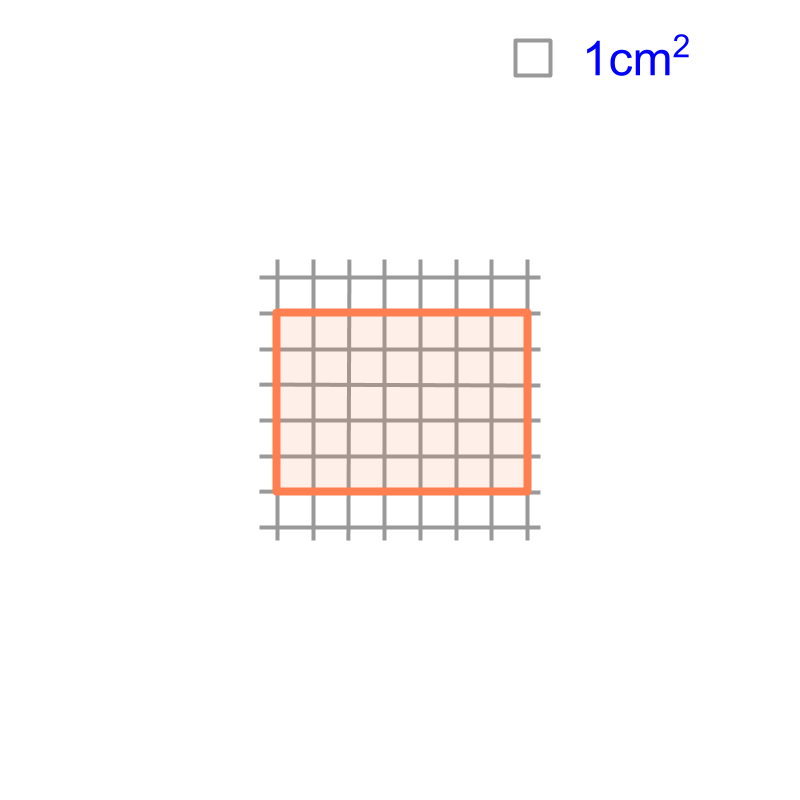
maths > mensuration-high > measuring-by-calculation
Measurement by Calculation
To measure a length, area, or volume one of the three methods is used. The second method is Measurement by Calculation. Length, Area, or Volume can be measured by calculations involving geometrical principles.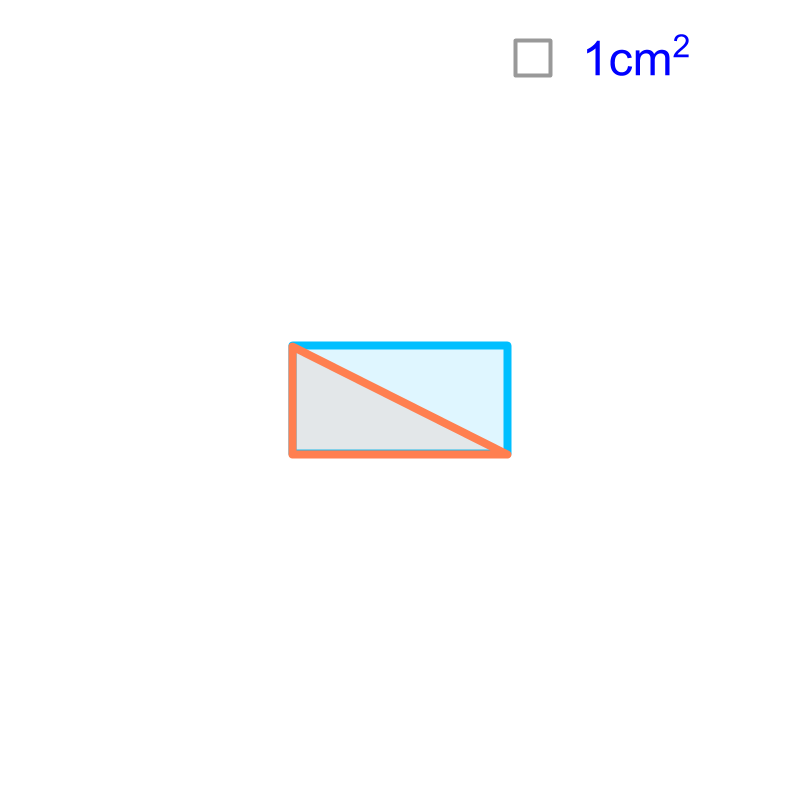
maths > mensuration-high > measuring-by-equivalence
Measurement by Equivalence
To measure a length, area, or volume one of the three methods is used. The the third method is " Measurement by Equivalence". Measurement by Equivalence: Length, Area, or Volume can be measured by constructing an equivalent shape or object involving geometrical principles.
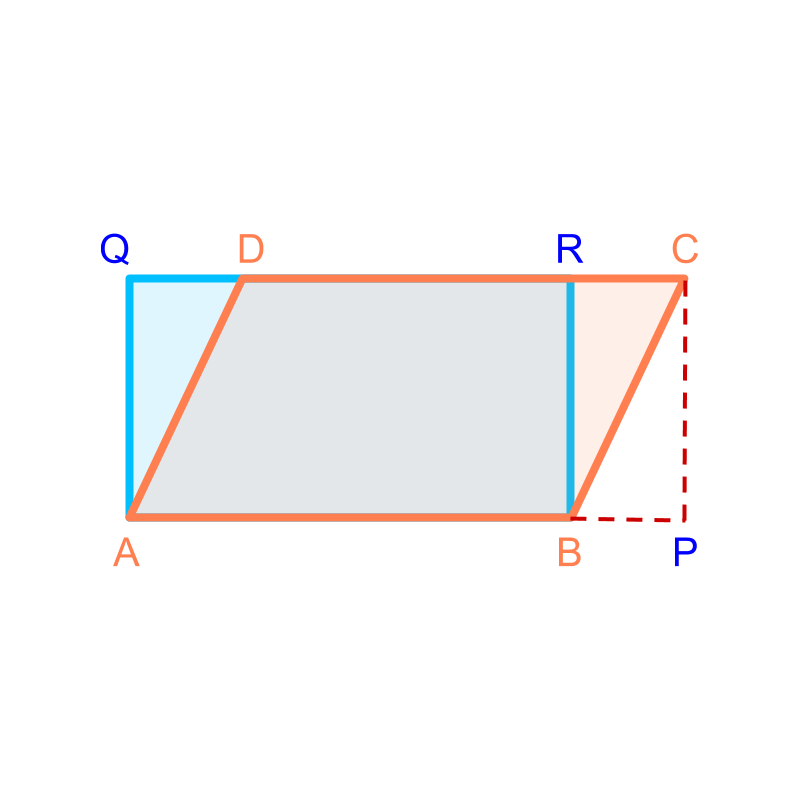
maths > mensuration-high > measuring-equivalence-by-infinitesimal
Equivalence by Infinitesimal Pieces
Three methods are used to find equivalence when employing measurement by equivalence. The first method is Equivalence by Infinitesimal Pieces. Length, Area, and Volume can be measured by equivalence with infinitesimal pieces.
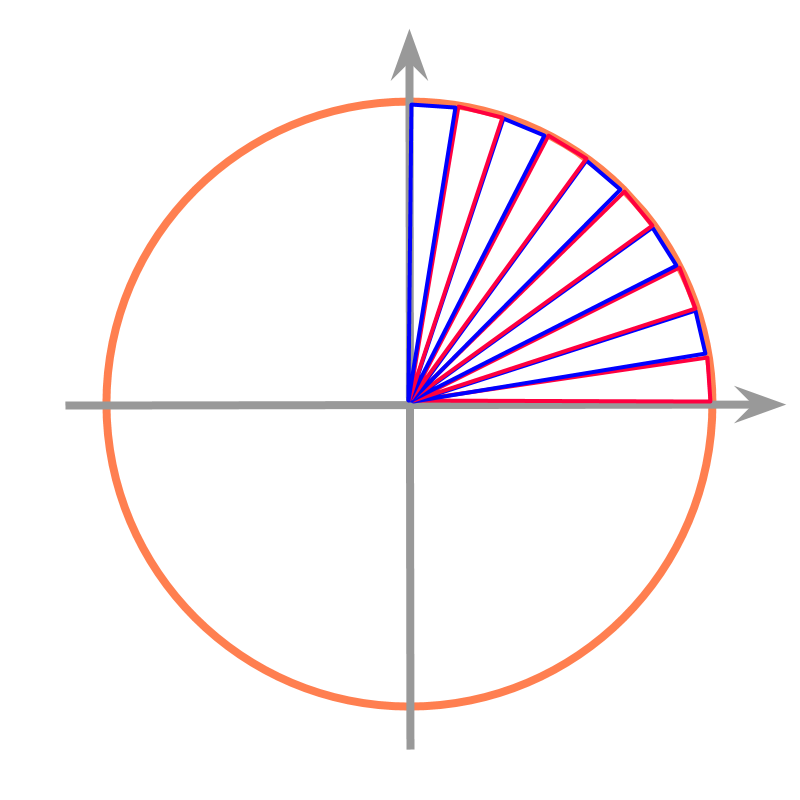 An example of finding perimeter of a circle is illustrated in the figure.
The circle is spanned with isosceles triangles.
An example of finding perimeter of a circle is illustrated in the figure.
The circle is spanned with isosceles triangles.
Approximate value of the perimeter of the circle equals sum of the bases of the triangles.
Accurate value of the perimeter of the circle is calculated by making the triangles infinitesimal small.
maths > mensuration-high > measuring-cavalieri-area
Cavalieri's Principle (2D)
Three methods are used to find equivalence when employing measurement by equivalence. The second method is Cavalieri's Principle in 2D : For a given two shapes on a plane, a line intersecting the shapes is considered. The length of the intersecting line segments and are considered.
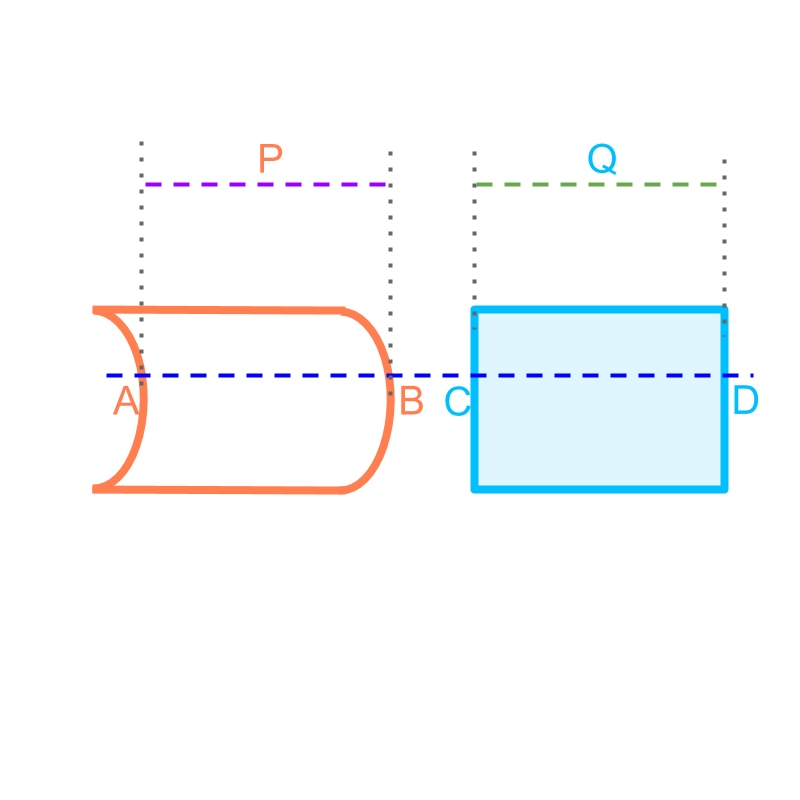 If the length of the intersecting line-segments are equal for all parallel lines to the intersecting line, then the areas of the two shapes are equal.
If the length of the intersecting line-segments are equal for all parallel lines to the intersecting line, then the areas of the two shapes are equal.
maths > mensuration-high > measuring-cavalieri-volume
Cavalieri's Principle (3D)
Three methods are used to find equivalence when employing measurement by equivalence. The third method is Cavalieri's Principle in 3D. For a given two solids, a plane intersecting the solids is considered. The area of the intersecting cross-sections and are considered.
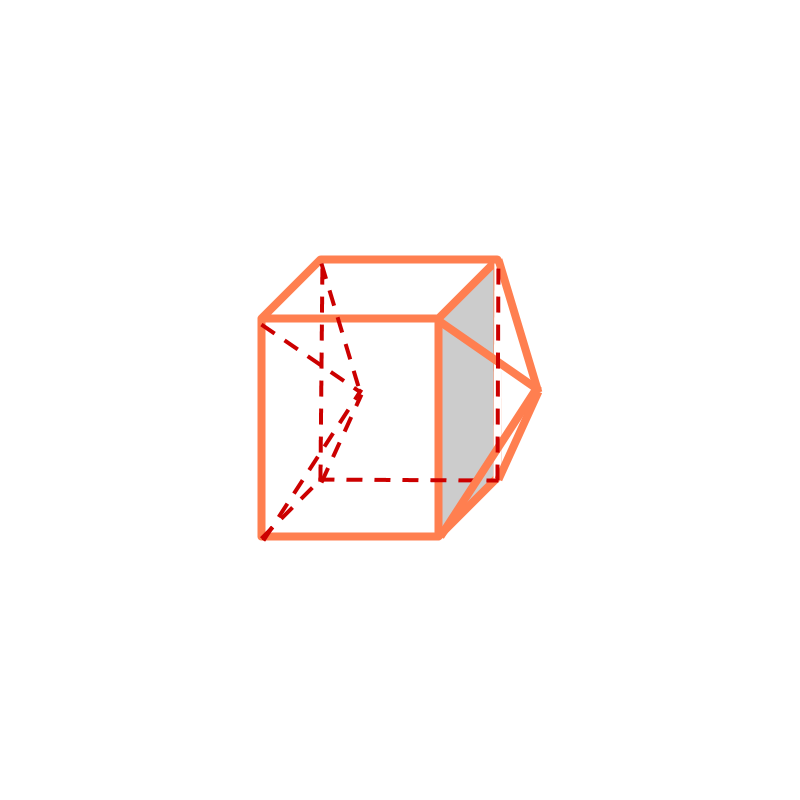 If the areas of intersecting cross-sections are equal for all planes parallel to the intersecting plane, then the volumes of the two solids are equal.
If the areas of intersecting cross-sections are equal for all planes parallel to the intersecting plane, then the volumes of the two solids are equal.
maths > mensuration-high > revision-polygons-perimeter-area
Perimeter & Area: Square, Rectangle, Triangle, Polygons
Finding perimeter and area of simple figures (squares, rectangle, triangle, polygon) are revised without much discussion.
maths > mensuration-high > perimeter-circle
Circumference of a Circle
Circumference of a circle of cm diameter is computed to be a decimal value that does not end or repeat. It is calculated to be by approximating the circle to infinitesimally small triangular pieces.
 That accurate value is represented by the symbol and approximate value of that is and .
That accurate value is represented by the symbol and approximate value of that is and .
Circumference of a circle of cm diameter is computed to be times the circumference of the circle of cm diameter.
Thus the generic formula for the circumference of a circle is or .
maths > mensuration-high > area-circle
Area of a circle
Circumference of a circle of cm diameter is computed to be a decimal value that does not end or repeat. That accurate value is represented by the symbol
Area of a circle of cm diameter is computed to be a decimal value that does not end or repeat. That accurate value is taken to be another value . It can be calculated to be a value by approximating the circle to infinitesimally small triangular pieces.
 We derive / prove that
We derive / prove that
Area of a circle of cm radius is computed to be times the area of the circle of cm diameter.
Thus the generic formula for the area of a circle is
maths > mensuration-high > surface-area-volume-basic-shapes
Revision : Cube, Cuboid, Cylinder
Finding surface area of simple figures (cube, cuboid, cylinder) are revised without much discussion.
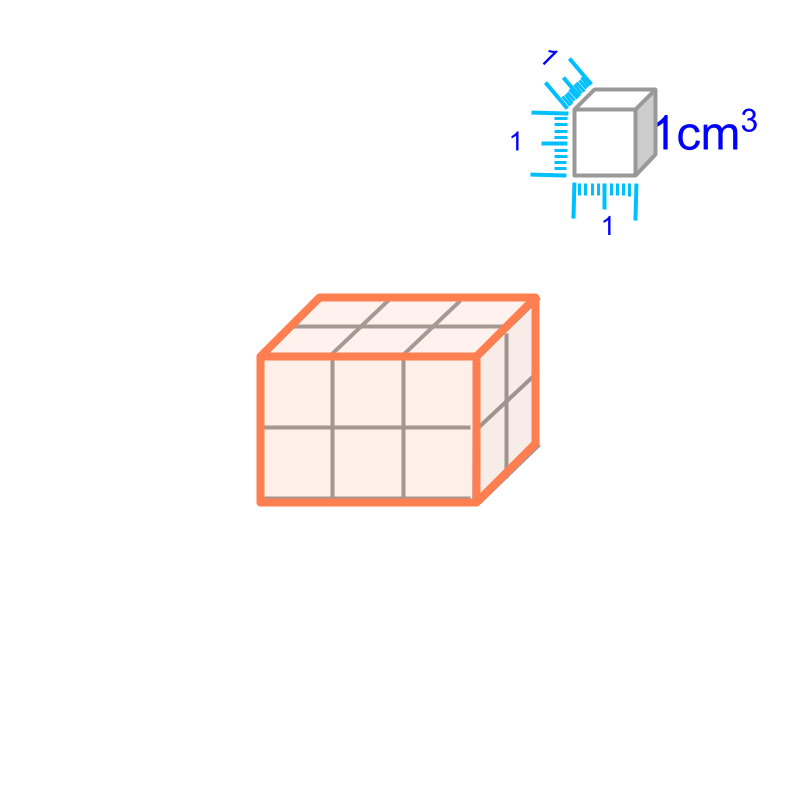 Surface Area of cube
Surface Area of cube
Surface Area of cuboid
Curved Surface Area of Cylinder
Surface Area of cylinder
maths > mensuration-high > surface-area-volume-prisms
Prisms : Surface Area and Volume
In this page, Finding surface area and volume of prism is explained.
Surface Area and Volume of Prism:
 Total surface area of a prism
Total surface area of a prism
area of the two faces on the top and bottom the area of the vertical faces
area of the two faces on the top and bottom height multiplied perimeter of the top or bottom face.
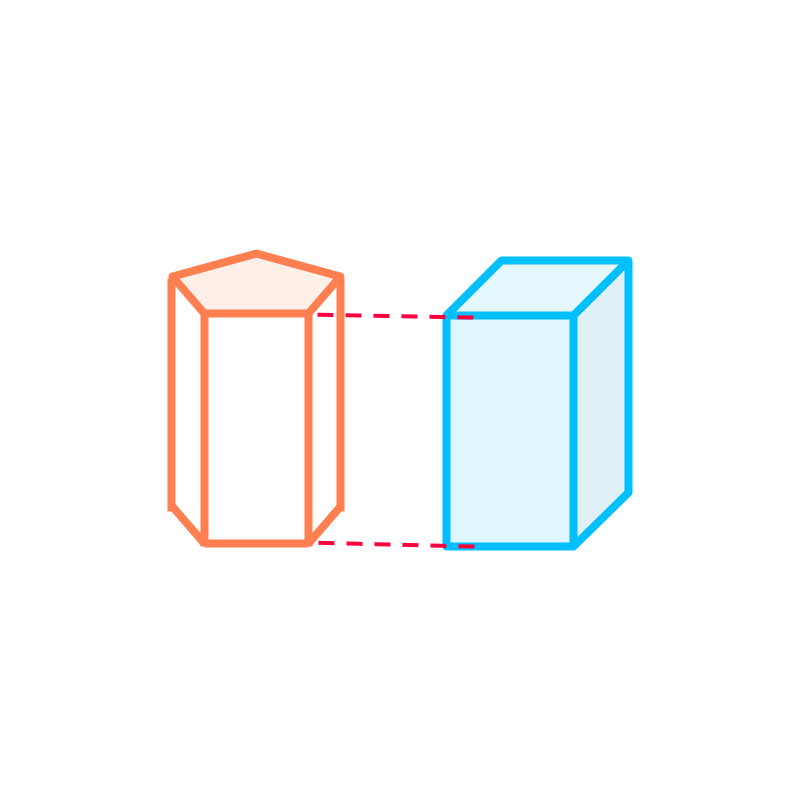 Volume of a prism
Volume of a prism
maths > mensuration-high > surface-area-volume-pyramids
Pyramids : Surface Area and Volume
In this page, finding surface area and volume of pyramids is explained.
Surface Area and Volume of pyramid:
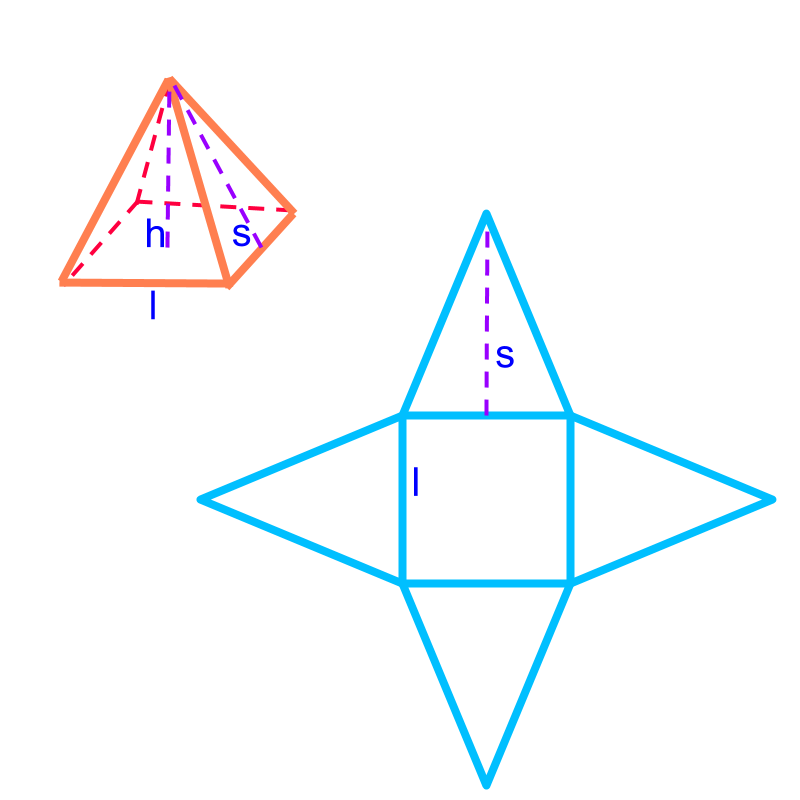 Total surface area of the pyramid
Total surface area of the pyramid
area of the base-surface sum of the area of the side-faces
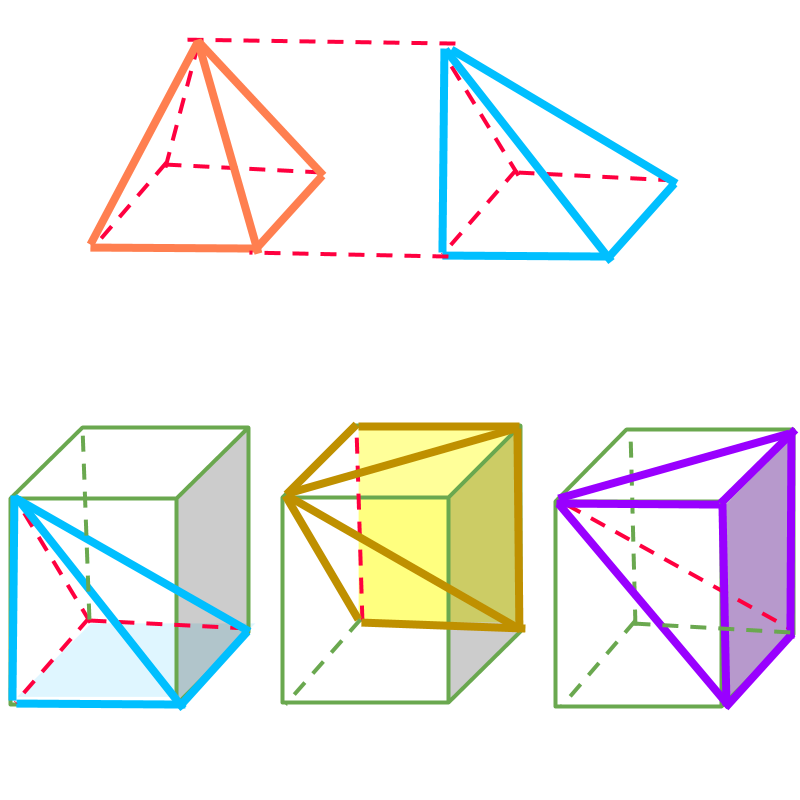 Volume of the pyramid
Volume of the pyramid
maths > mensuration-high > surface-area-volume-cone
Cone: Surface Area and Volume
In this page, Finding surface area and volume of cone is explained.
Surface Area and Volume of cone:
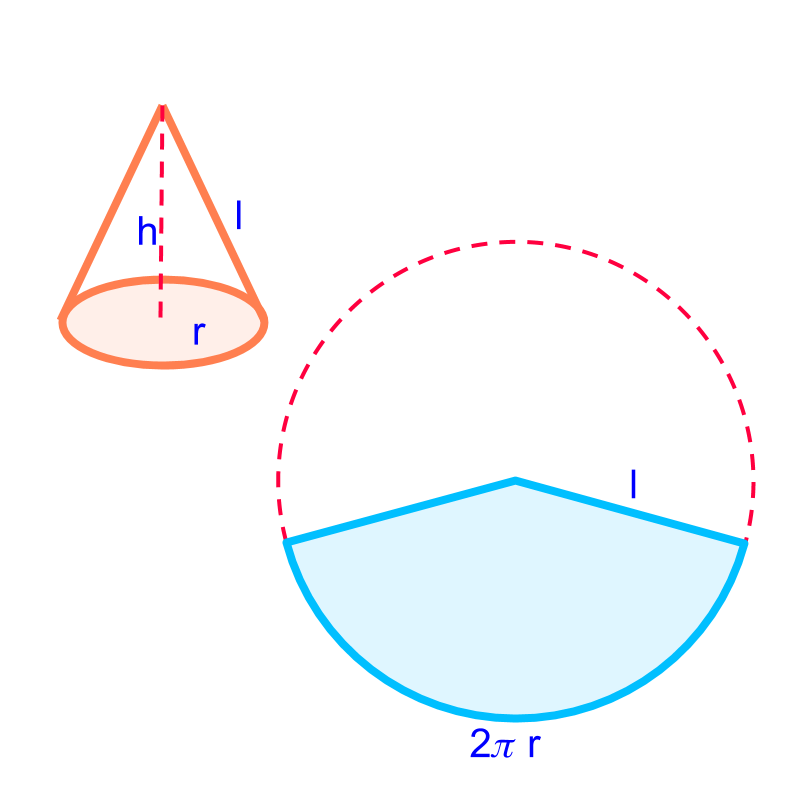 Total surface area of a cone
Total surface area of a cone
area of the base-surface sum of the area of the side-faces
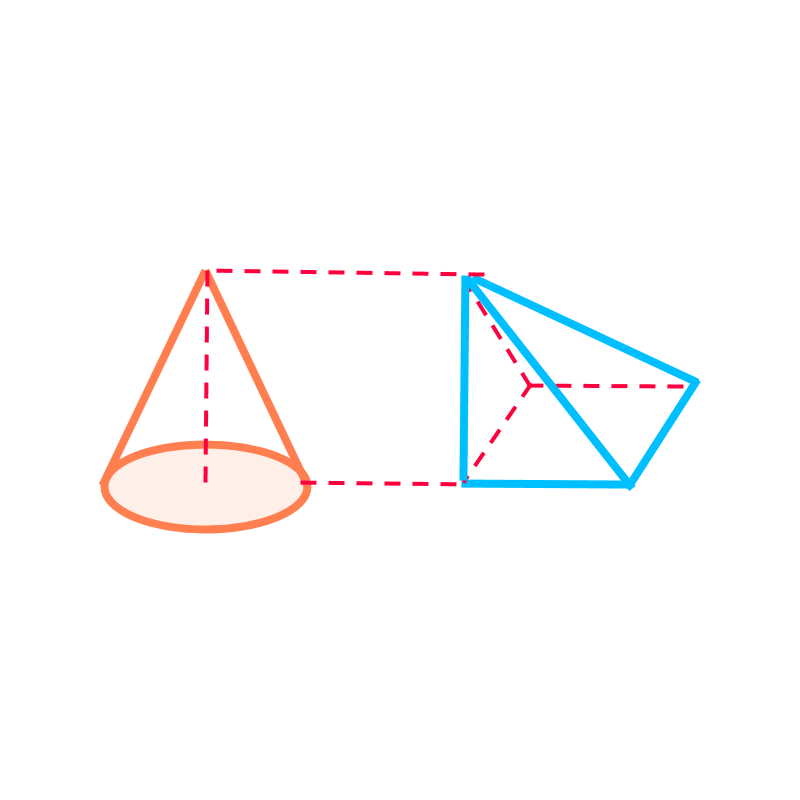 Volume of a cone
Volume of a cone
maths > mensuration-high > surface-area-volume-sphere
Sphere : Surface Area and Volume
In this page, finding surface area and volume of sphere is explained.
Surface Area and Volume of Sphere :
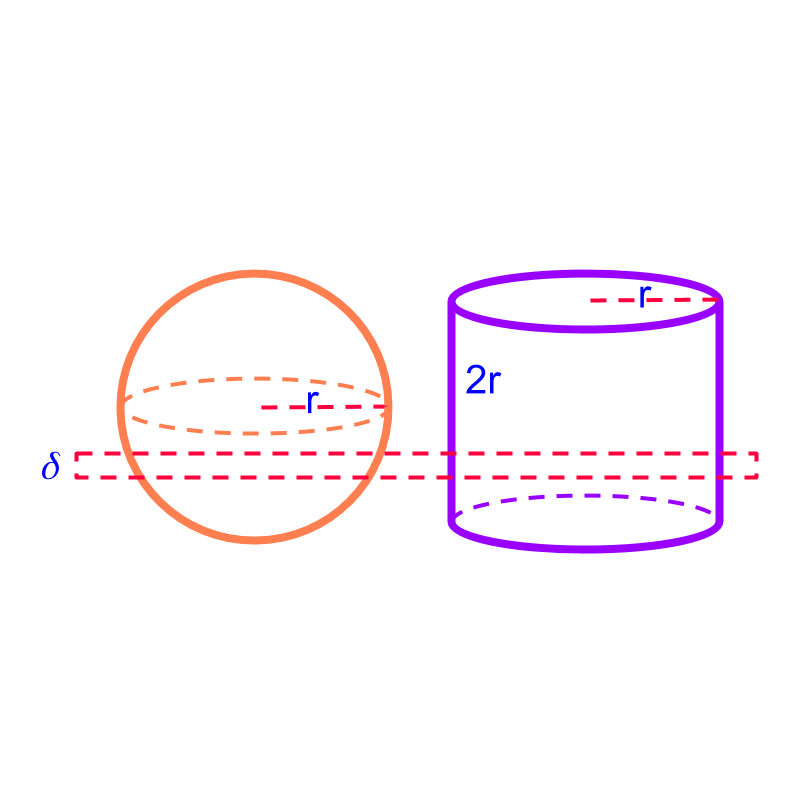 Surface Area
Surface Area
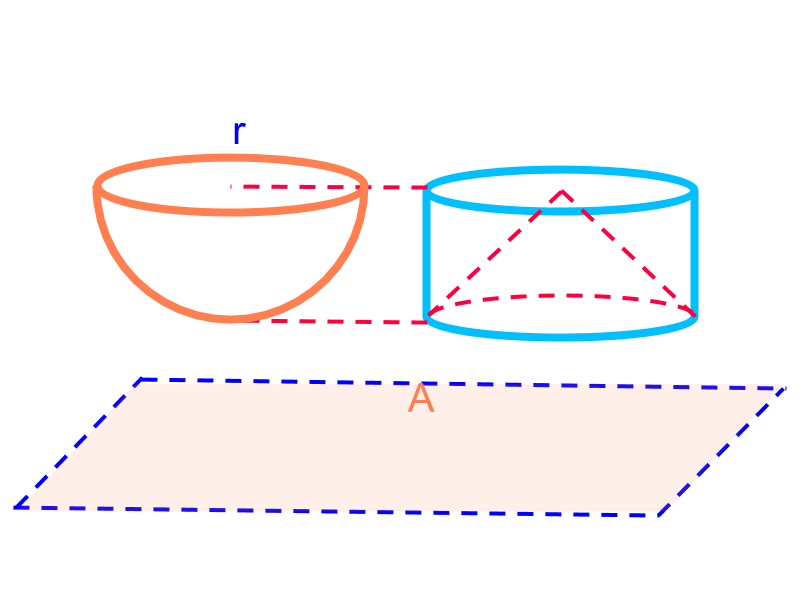 Volume
Volume
maths > mensuration-high > understanding-part-shapes
Understanding Part Shapes
We studied about 2D shapes
• squares,
• rectangles,
• triangles,
• polygons, and
• circles
These are some of the standard shapes.
Some part-shapes can be derived from these standard shapes. One of the method is to cut the shapes with straight lines and part of the standard shape is analyzed for perimeter or area.
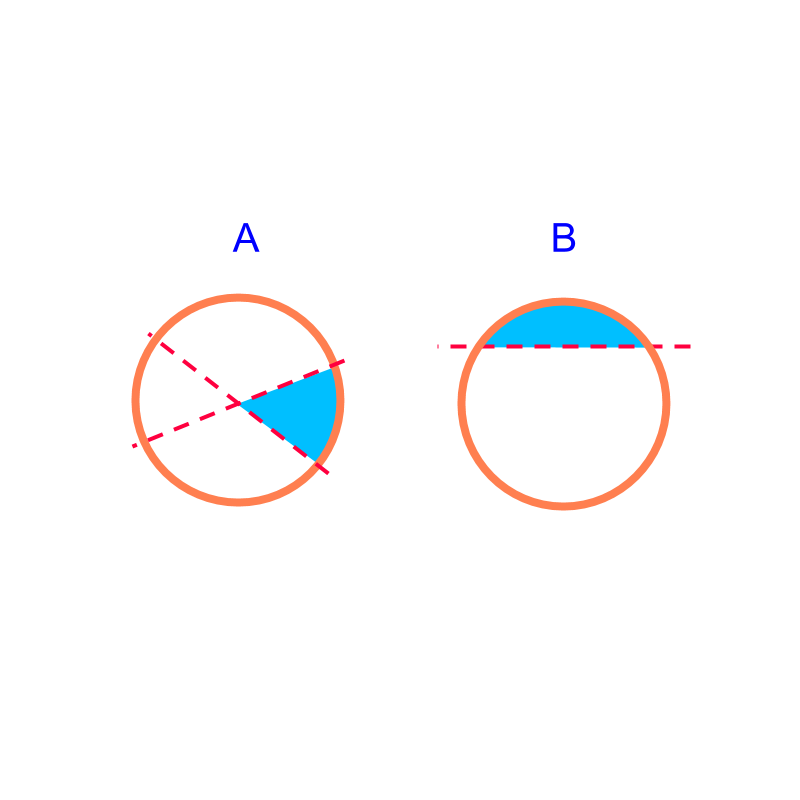 • the perimeter and area of sectors and segments.
• the perimeter and area of sectors and segments.
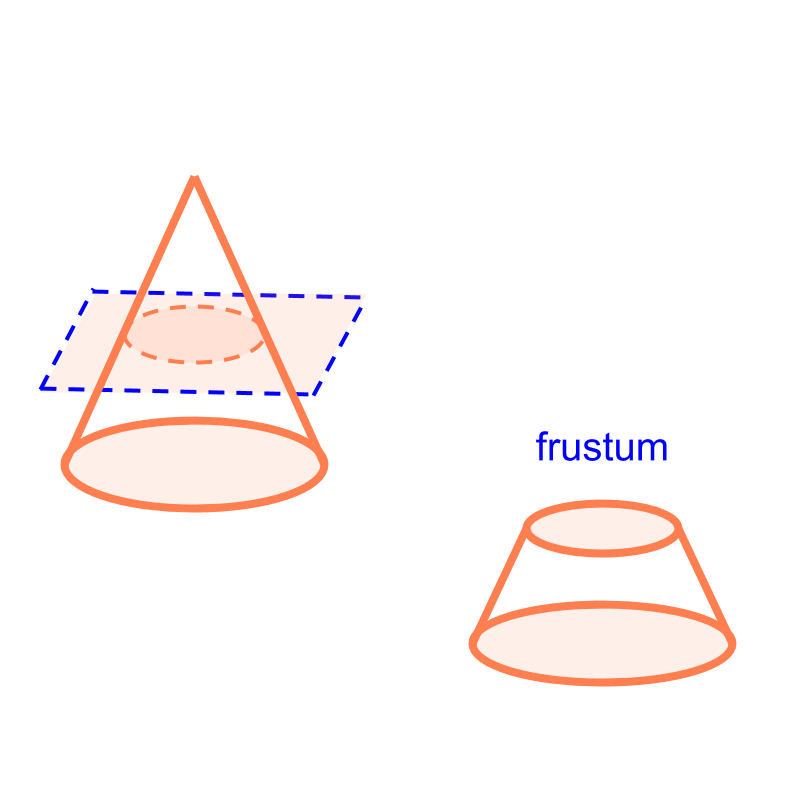 • the surface area and volume of frustum.
• the surface area and volume of frustum.
maths > mensuration-high > area-part-circle
Area of Parts of Circle : Sector and Segment
In this page, finding area of parts of circle, sectors and segments, is discussed.
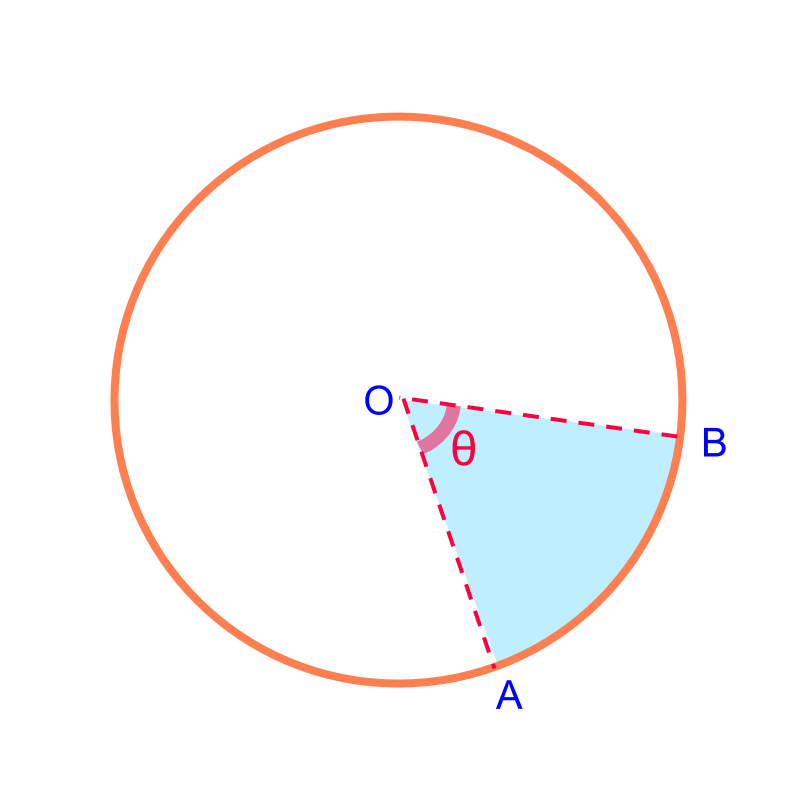 Arc Length and Area of a Sector: The arc-length and area are proportion to the angle subtended by the sector.
Arc Length and Area of a Sector: The arc-length and area are proportion to the angle subtended by the sector.
Arc length of a sector of angle
Area of a sector of angle
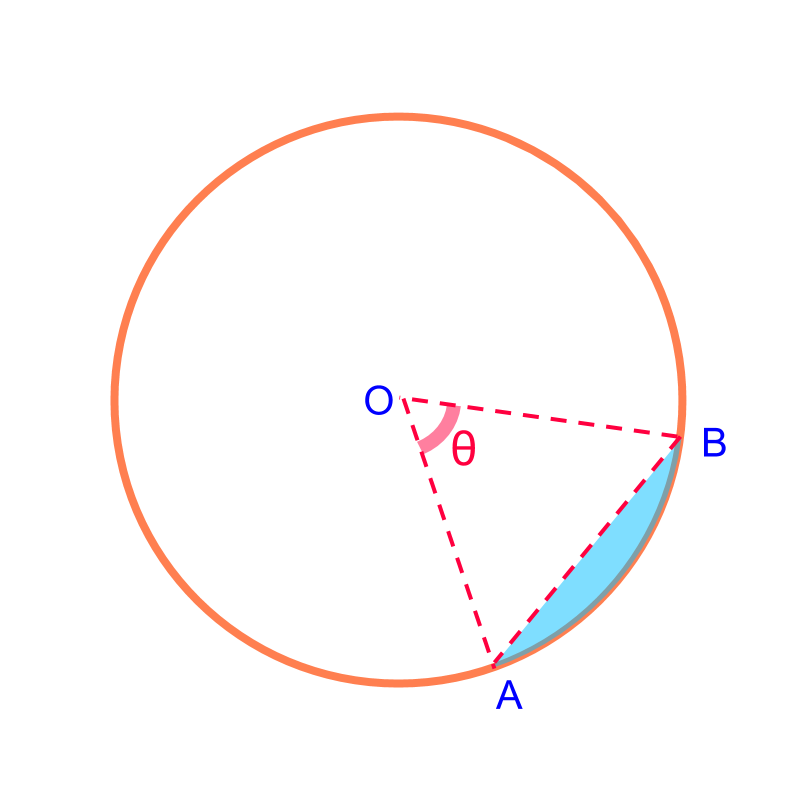 Area of a Segment: is the difference between area of sector and the triangle.
Area of a Segment: is the difference between area of sector and the triangle.
Area of a Segment of angle = area of the corresponding sector the triangle
maths > mensuration-high > area-volume-frustum-cone
Surface Area and Volume of Frustum of a Cone
In this page, finding area and volume of a frustum, is discussed.
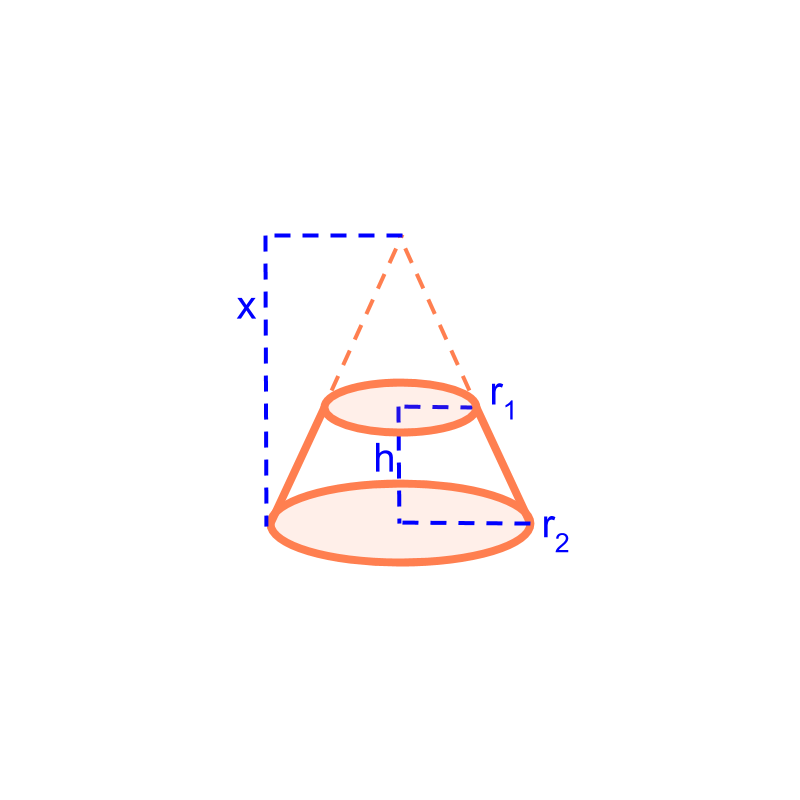 Surface Area and Volume of a frustum: The frustum is visualized as part of a cone and the height of the cone is worked out from the given height and radius of frustum.
Surface Area and Volume of a frustum: The frustum is visualized as part of a cone and the height of the cone is worked out from the given height and radius of frustum.
Surface Area of frustum is the difference between surface area of larger cone and smaller cone.
Volume of frustum is the difference between volume of larger cone and smaller cone.